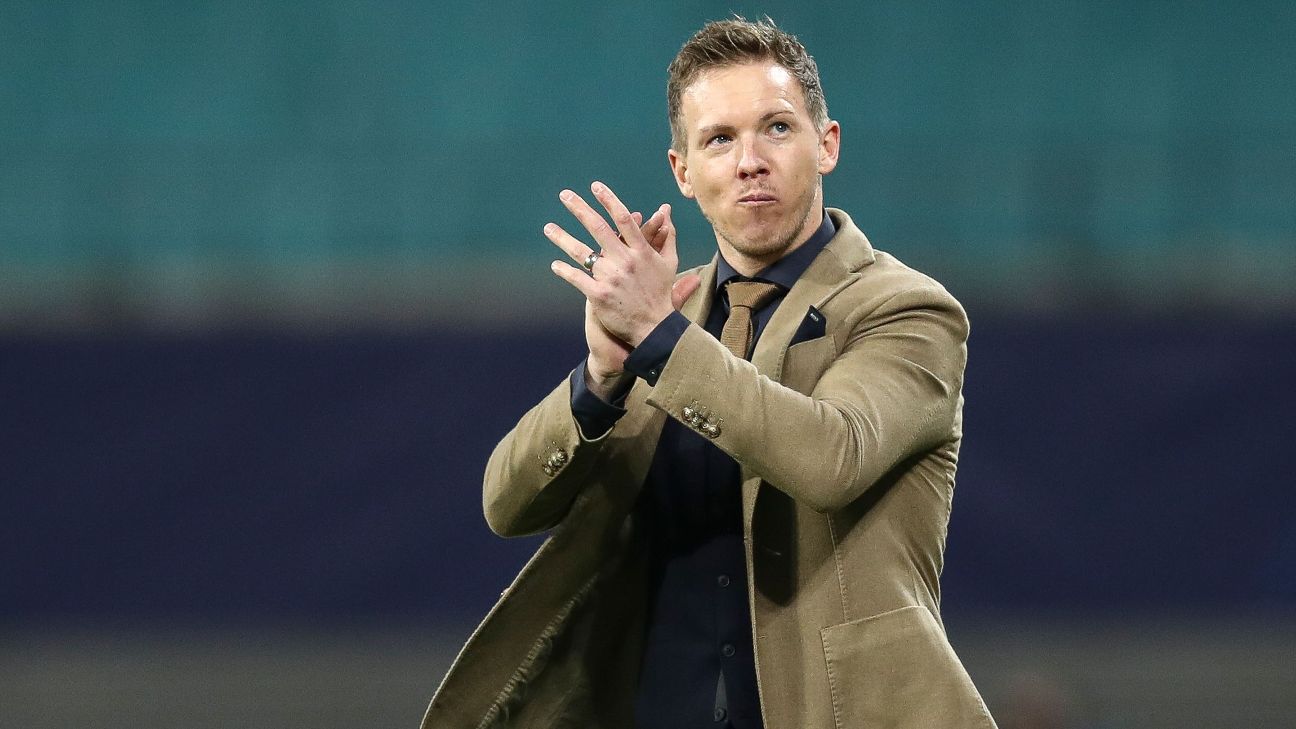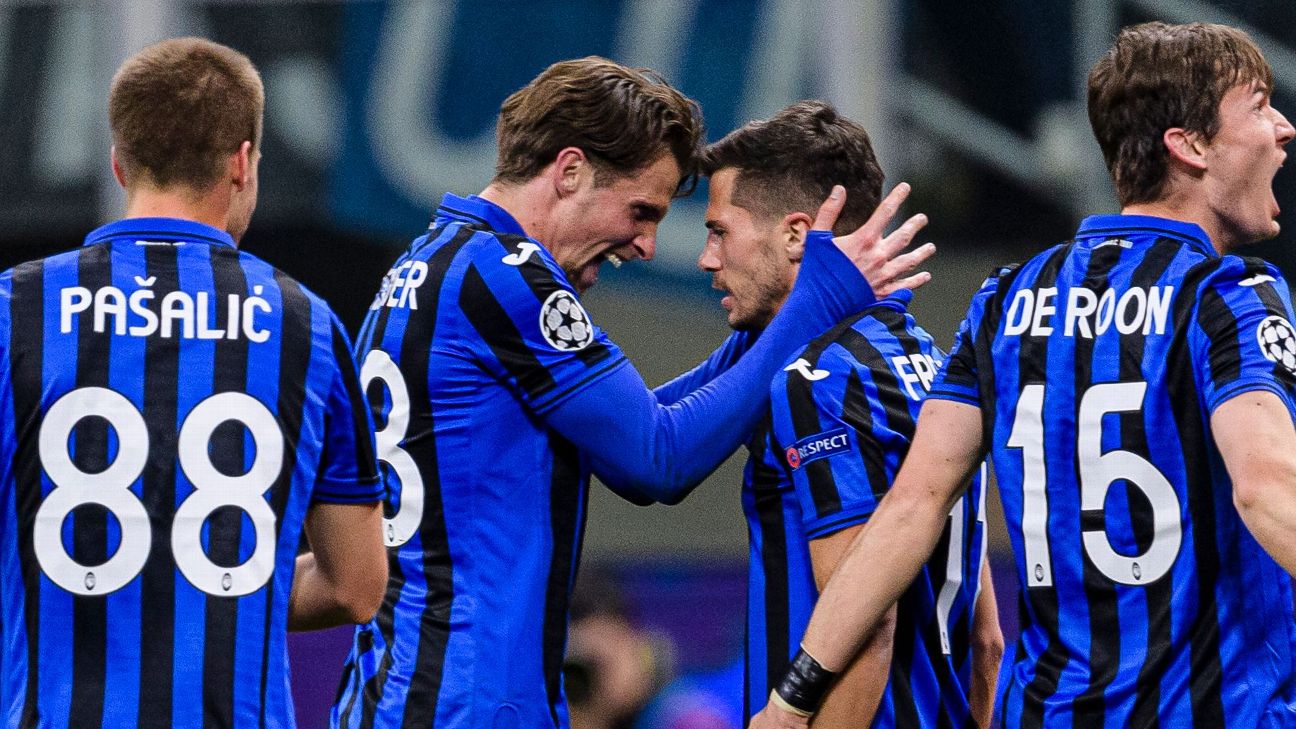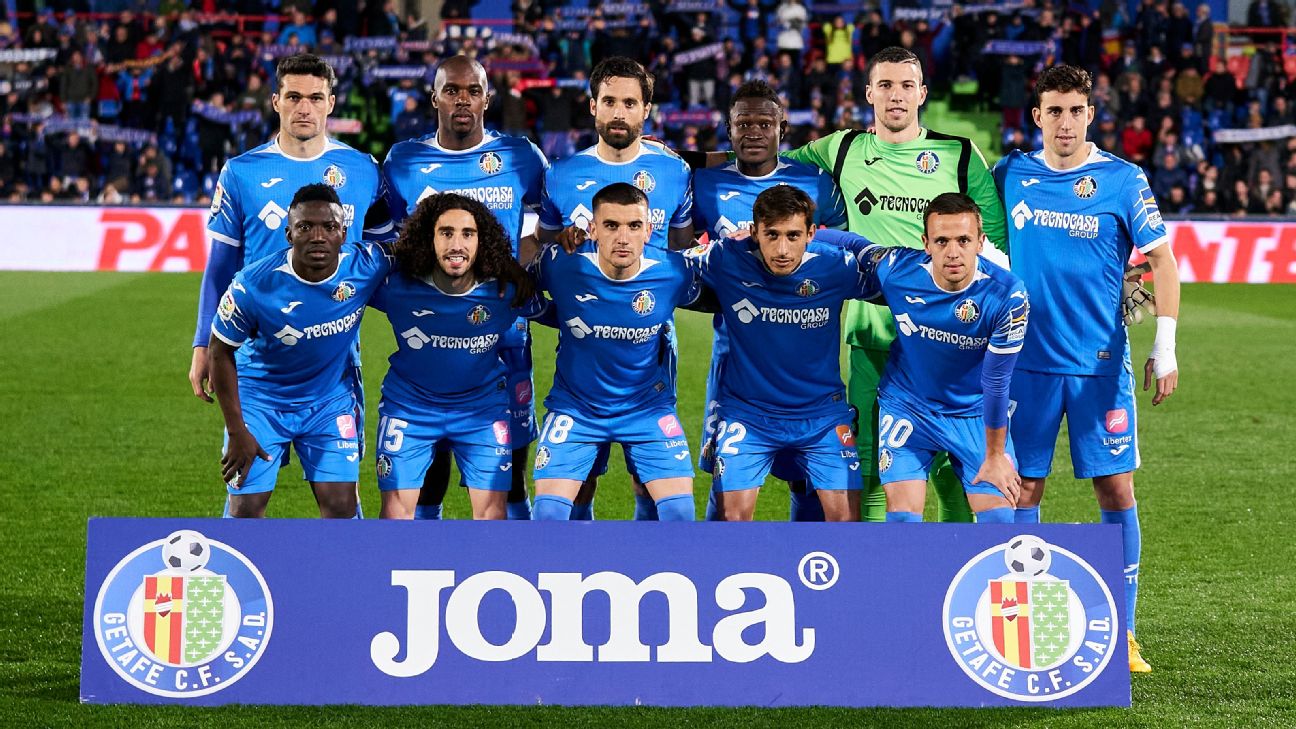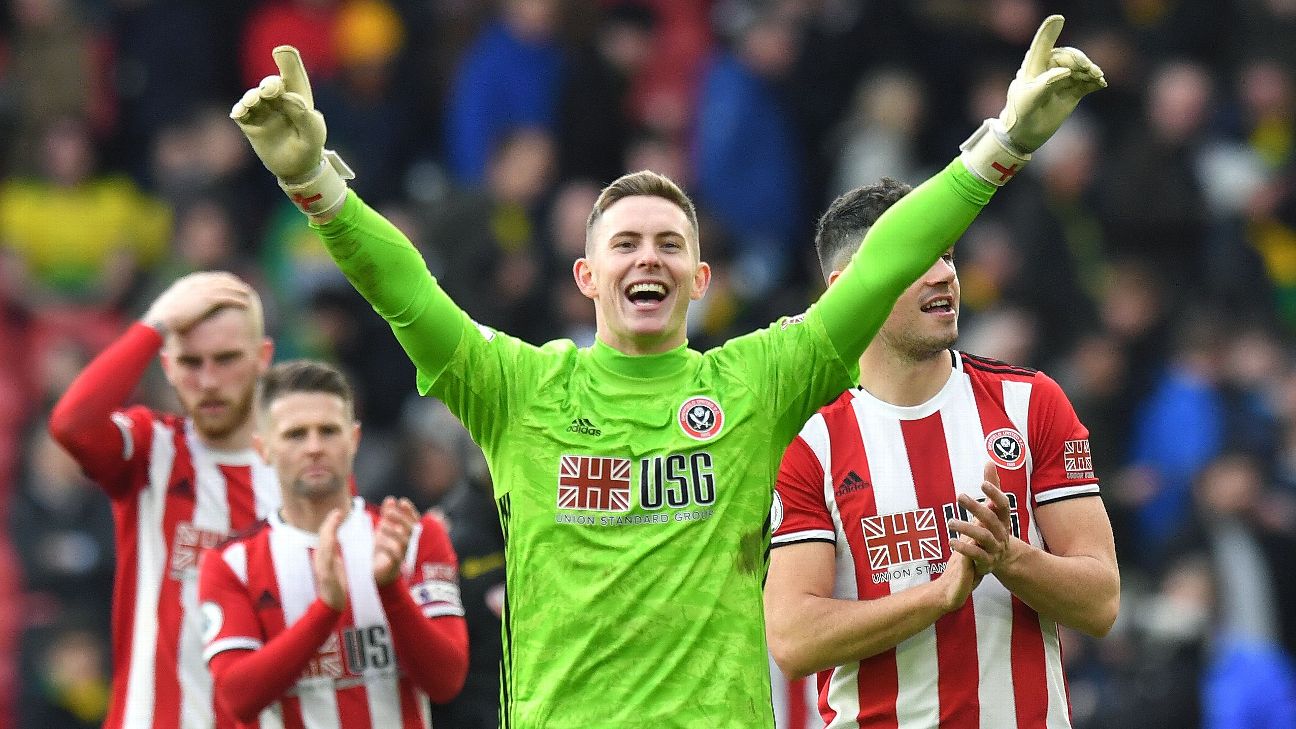Products You May Like
There are two primary truths in modern European soccer.
1. Possession is nine-tenths of the law. Of the 12 teams averaging at least two points per match in Europe’s five biggest leagues (Premier League, La Liga, Bundesliga, Serie A, Ligue 1) before the 2019-20 season was suspended due to the coronavirus, eight were enjoying at least a 58% possession rate in league play, and one of the four that wasn’t (Red Bull Leipzig) was at 59% in Champions League play, which shows they were capable of dominating the ball. Only two teams had possession rates of 60% or higher while averaging under two points per match: Bayer Leverkusen (1.9 points per match) and Chelsea (1.7). Both had solid odds of qualifying for the Champions League.
Possession itself is not a direct indicator of quality, of course, and there are technically other ways to win. Lazio, for example, with its 50% possession, was at 2.38 points per match and only a point out of first place in Serie A. But hogging the ball is perhaps the most efficient way to play this sport at the moment.
– Ogden: Records that would be lost if season is voided
– Thompson: A letter from coronavirus quarantine
– Miller: What we miss about the Premier League
– Stream FC TV on ESPN+ Monday through Friday
2. To possess the ball, you need money. Of the seven teams at 60% possession or higher, six ranked in the top nine of Deloitte’s most recent revenue generation rankings: Barcelona (first), Bayern Munich (fourth), Paris Saint-Germain (fifth), Manchester City (sixth), Liverpool (seventh), and Chelsea (ninth). Leverkusen was the only outlier and yet they’re still among the more lucrative clubs in Germany. Among Deloitte’s top 20 money makers, only three — forever-outlier Atletico Madrid, forever-underachiever West Ham United, and forever-little-brother Everton — were under 50% possession.
The most direct path to success in soccer is through strong possession play, but you can’t acquire the pieces that allow you to hog the ball unless you have more money than most nation-states. That’s a pretty unfair combination.
And yet, teams outside of the richest one-percent win all the time, right? At the time play was suspended, Atalanta and RB Leipzig were in the Champions League quarterfinals, Leicester City was all but assured third place in the Premier League, Wolves and Sheffield United were still in play for a Champions League bid, and Lazio was on a nearly six-month league unbeaten streak — millimeters from catching mighty Juventus in the Serie A table.
Money seems to rule this sport more than ever, but minnows — and compared to those top revenue teams, everyone is a minnow — can still win. I thought it might be worth it to explore what some of the sport’s biggest current overachievers do, or do not, have in common.
I chose two teams from each of the top five leagues through a couple of different methods: identifying high achievers in 2019-20 that aren’t yet on Deloitte’s or KPMG’s club value lists, and looking at the estimated total player values for each club at Transfermarkt and identifying who has particularly high points-to-value ratios. A few leagues had more candidates than others, but here are the 10 teams I’m working with for this exercise:
– English Premier League: Leicester City (third at the time of suspension) and Sheffield United (seventh)
– Spanish La Liga: Getafe (fourth) and Granada (ninth)
– German Bundesliga: RB Leipzig (third) and Borussia Mönchengladbach (fourth)
– Italian Serie A: Lazio (second) and Atalanta (fourth)
– French Ligue 1: Marseille (second) and Reims (fifth)
Some of these clubs have extensive histories and solid bank accounts; others have neither. But all 10 were punching well above their respective weight classes in 2019-20. (By the way, if you’re morbidly curious like I was, here are each league’s biggest underachievers by this method: West Ham, Espanyol, Werder Bremen, AC Milan and Toulouse. The absence of West Ham or Milan would have justifiably brought my methods into question.)
So what’s worked for these 10 clubs that could work for others below soccer’s top tier?
Roster Management
Get younger…
In terms of average age of roster, both Leipzig (23.6) and Reims (24.1) were among the five youngest clubs in the Big Five, and in 32-year old Julian Nagelsmann, Leipzig is led by one of the youngest managers around, too. Marseille (25.6) is among the 20 youngest, as well.
Of course, Toulouse and Mainz are also undergoing major youth movements at the moment, and they are among Europe’s biggest underachievers. So maybe you should…
…go old
Both Getafe (28.2) and Sheffield United (27.9) have among the oldest rosters in the big five, while Gladbach (27.5), Leicester (27.2), Lazio (27.2), Granada (27.0) and Atalanta (26.8) are older than average. Burnley (29.0) is another major overachiever that nearly made this list and has the fourth-oldest roster among this 98-team sample. Each of these teams has managed to identify well-valued veterans to pair with younger acquisitions.
Of course, West Ham (28.4) has found no veteran path to overachievement. Age hasn’t helped SD Eibar (29.9), Genoa (28.4) or Napoli (27.9) either.

Coaching
Hire an up-and-comer, if you can
Finding the next great leader is a sure way to overachieve, at least until he gets plucked away by a bigger club. While Nagelsmann is as young as they come, big things are also expected of Gladbach’s Marco Rose (43), Lazio’s Simone Inzaghi (43) and Granada’s Diego Martinez (39) as well as they continue to impress with limited resources.
There are only so many young hotshots to go around, though, and sometimes it turns out that they aren’t quite ready for prime time. So maybe you should…
…hire a grinder instead
Sheffield United’s Chris Wilder (52), Reims’ David Guion (52) and Getafe’s Pepe Bordalas (56) are all veterans who have spent most of their careers at the sport’s lower levels. They are the personification of the journeyman boxer who hasn’t had the natural skill of the champs but knows every trick in the book for frustrating them. All three of these managers not only oversaw promotion to the top level but also engineered immediate top-half-of-the-table finishes.
Then again, not everyone is Rocky Balboa. A lot of grinders help their teams to promotion but find themselves unable to adjust to life at the sport’s highest level. Maybe you should…
…hire someone with top-level experience
Leicester’s Brendan Rodgers (47) nearly led Liverpool to the Premier League title in 2014 but was ousted the next year and spent three seasons with Celtic before joining up with LCFC last February. Marseille’s Andre Villas-Boas, still only 42, was arguably the Nagelsmann of his day, earning the Chelsea job at age 33 after a magnificent run at Porto. But he lasted less than one season at Stamford Bridge and just a season-and-a-half at Tottenham Hotspur before rehabilitating his career at Zenit Saint Petersburg and Shanghai SIPG. He joined Marseille last May and has been a big hit.
Atalanta’s Gian Piero Gasperini had seemingly managed half the clubs in Italy — Crotone, Genoa, Inter Milan, Palermo, Palermo again (long story), then Genoa again — before moving to Bergamo. And at the age of 62, he has truly found himself.
Playing Style
Stay ahead of the curve
There are rewards associated with identifying trends and staying modern. In soccer, “modern” now typically refers to a press-heavy (but not contact-heavy), more possession-based style. That is usually, but not always, associated with a large number of possessions won on the opponent’s side of the field and a low total number of possessions. A majority of the 10 teams I mentioned at the top have figured out how to stay on the front side of evolution even if they don’t have the money to control the ball 65% of the time.
RB Leipzig ranked first in the big five with 61.9 ball recoveries — defined by Opta as “where a player recovers the ball in a situation where neither team has possession or where the ball has been played directly to him by an opponent, thus securing possession for their team” — per 90 minutes. They ranked second in possessions won in the middle third of the field (29.5).

Atalanta ranked eighth in ball recoveries (58.3), fifth in possessions won in the middle third (28.3) and seventh in possessions won in the attacking third (5.5). Lazio averaged the seventh-fewest possessions per match at 88.3. (Granted, this was higher than either of the other main competitors in Serie A this year: Juventus was at 84.9, Inter Milan at 86.2.) They had the 12th fewest possessions with 0-2 passes, and they were 13th in average possession time.
Gladbach thrived with incisive passing. Despite only a 52% possession rate and a non-abundance of shots, they were ninth in assists (1.6 per match), eighth in expected assists, sixth in percentage of shots taken in the box, fifth in on-target shot percentage and third in what Opta calls Big Chances Created (“a situation where a player should reasonably be expected to score”).
Leicester wasn’t at the top of any of the relevant “modernity” categories but was in the top-25 or so in almost all of them — 14th-fewest fouls, 15th in total touches per match, 16th in possession rate, 17th in total pass attempts, 26th in ball recoveries, etc. Most important: they were 10th in average goals scored. Marseille was extremely similar to Leicester in this regard, only a bit more physical (more tackles, more fouls) and a bit more languid offensively (longer possessions, fewer goal opportunities).
For the most part, these teams are also pretty well-funded, and most reside in larger markets. They’re only “minnows” compared to the heavyweights in their league — they have more money than most, enough to put their own unique spin on the possession game. (Three of these teams — Atalanta, Leipzig, and Gladbach — are in the top 10 in set-piece goals scored, too.)
If you don’t feel you have the pieces to do this, though, don’t fake it. You might find more benefit when trying to…
…zig when others are zagging
If you can’t dominate the ball, don’t even bother with the ball. Getafe, Granada and Sheffield United all found success despite only 43-44% possession.
In terms of size, value, recent history, etc., Granada and United are the least likely achievers on this list. Hell, both were in their respective countries’ second divisions just last season! But Granada were holding their own (ninth place with 11 wins, 11 losses, and nine draws in La Liga) and United were doing even better: they were in seventh place, just two points out of the Premier League’s last Champions League spot.
– Maysh: Meet the world’s biggest Beckham collector
– Marcotti: Explaining FIFA’s plan to save the transfer window
– Dawson: Assessing Solskjaer’s first year at Man United
They reached these achievements in similar, retreating ways. Granada had the eighth-fewest ball recoveries, fourth-fewest total touches, third-fewest possessions with 9+ passes and, for that matter, third-fewest shots on goal. They also committed the sixth-most fouls. They kept as many men as possible behind the ball and fouled if you started to get ahead of them. Granted, this style was losing its effectiveness a bit — Granada won 20 points in their first 10 matches (which included a 2-0 win over Barcelona) but managed only 18 points in their last 17 — but it also assured mid-table success in their first year back in La Liga.
Sheffield United had a smidge more to offer than Granada offensively and was enjoying more success because of it. But it was the same concept: 12th-smallest possession rate, ninth-fewest shots on goal, 16th-lowest possession time, etc. Safety first, maybe goals later.

Both of these teams were Guardiola’s Barcelona, however, compared to Getafe. Behold, the most anti-modern football team in Europe:
– Fewest touches (489.6) and pass attempts (298.5) in the big five leagues
– Most possessions with 0-5 passes by far (91.5) and fewest possessions with 9+ passes by far (6.0)
– Fewest average passes per possession (3.0), too
– Second-shortest average possession time (15.8 seconds)
– Most solo possessions (24.0), third-lowest pass completion rate in the attacking third (53.1%)
– 11th-fewest chances created (7.4) but fewest chances allowed (5.0). Only one other team (Manchester City) was allowing fewer than 6.4
Getafe were fourth in La Liga despite openly hating the ball. They wanted no part of it, except in two scenarios: a counter-attack or a pressing opportunity. Their direct speed (Opta’s attempt at measuring how aggressively you’re moving the ball upfield) was the highest in the big five, and they had the 14th-most possessions won in the attacking third. They turned you over and tried to immediately generate a scoring chance. If it didn’t work, they gave you the ball back and tried again.
Take risks offensively
When you’re in a smaller market trying to run with the big boys, you often end up taking on more high-volatility strategies. Maybe that means more deep passing, or passing period in American football or a particularly absurd number of 3-pointers in basketball. In soccer, it might mean committing a high number of players upfield and risking death by counter attack.
With this philosophy, Atalanta played in the most prolific matches in the big five this season.
Gab Marcotti recently wrote the definitive summary of Atalanta’s rise under Gasperini and their fearless football took them to the Champions League quarterfinals before the sport shut down. But maybe you don’t have the stomach for this type of style. You could also attempt the exact opposite approach and…
…go all in defensively
Guion was a defender for clubs like Angers and Lille throughout a nearly 20-year playing career. It’s safe to say that these experiences helped define his managerial vision. He was promoted from Reims’ B-team manager with the club in Ligue 2, and he helped them to earn promotion in 2018. They finished eighth in Ligue 1 last year and were in fifth, one spot from Europe, at the time of stoppage. They beat both PSG and Marseille early in the season and had lost in only one of their last seven league matches, reaching the Coupe de la Ligue semifinals to boot. And they did it with the least Atalanta-like style in the big five.
Guion hates goals as much as Gasperini has grown to love them, and he had maybe the most successfully physical team in the big five at his disposal. Ligue 1, a pretty physical league overall, had 20 players with at least 40 tackle attempts and at least a 45% successful tackle rate. Of those 20, five played for Stade de Reims: Xavier Chavalerin (70 tackles, 52% success rate), Thomas Foket (61, 47%), Hassane Kamara (58, 68%), Yunis Abdelhamid (46, 56%) and Ghislain Konan (43 in only 16 matches, 50%). Playing against Reims was a bruising, unrewarding experience.
You didn’t really expect a secret formula, did you?
Create a plan, then bring in people who can execute it. It’s a lot easier to say than do, but it’s how things work.
Building a winner when you’re not one of the 10-12 clubs with endless financial resources is at once a limiting and freeing exercise. On one hand, you probably don’t have the money to play the most efficient and directly effective version of the sport. Even if you come up with something effective, you’re unlikely to keep up with the big boys over the long haul no matter what you try.
On the other hand, though, you’re free to try just about anything. Sign young or old players. Play really fast or really slow. Aim for all of the goals or almost none of them. Whatever you try to do, if you do it well, you’ll win matches and threaten the big boys, at least for a while.
